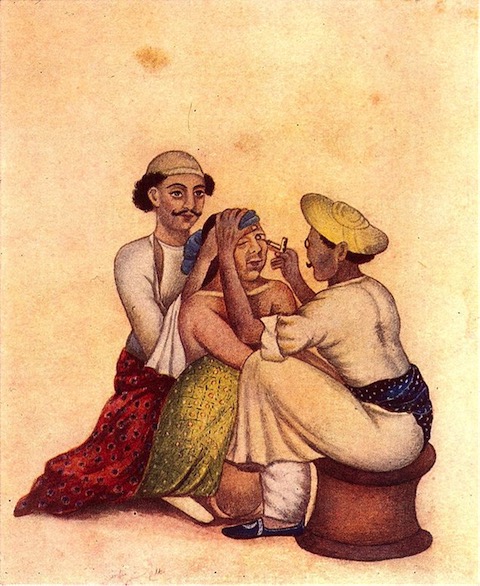
Cataracts are not a new phenomenon. They have plagued people throughout human history. Doctors attempted to surgically treat them long before they had a clear understanding of how eyes worked and well before the advent of anesthesia.
The first known documentation of cataract surgery was written in India around 800 B.C., but evidence from archeological digs suggest that cataract surgeries may have been performed in Ancient Egypt and Mesopotamia even earlier.
Cataracts are believed to be mentioned in the Papyrus Ebers, an Egyptian medical book of herbal knowledge from 1550 BC. But it remains inconclusive by scientists whether they were able to properly diagnose cataracts. Especially because their treatments included eye ointments and magic spells. And as we know from modern medicine, the only treatment for cataracts is removing the lens.
The laws of Babylon established by King Hammurabi, known as the Code of Hammurabi, contained sections regulating eye surgeries. For example, it dictated that a doctor who caused his patient to lose an eye from surgery would have his hands cut off. Cataract surgery may well have been one of the procedures the Code of Hammurabi sought to regulate.
Couching is the well-documented method of cataract surgery used during ancient times in India. Maharshi Sushruta, an ancient Indian surgeon, first described the procedure in a medical treatise. The procedure involved taking a curved needle and pushing the lens into the rear of the eye and out of the field of vision. After the surgery, the eye would be soaked in a warm milk and bandaged.
When successful, couching let light back into the eye. However, it knocked the patient’s lens out of place, which resulted in unfocused vision. Regardless, the popularity of the procedure spread into surrounding countries, eventually making its way across the world. Couching remained the dominant surgical treatment for cataracts until the eighteenth century.
Read: Definitive Guide to Cataract Surgery
Couching did not get rid of the cataract. It simply pushed it deeper into the eye. The first reported surgical removal of a cataract from the eye occurred in Paris in 1748 when French ophthalmologist Jacques Daviel performed the first extracapsular cataract extraction. While Daviel’s extraction method finally got rid of the cataract, it also got rid of the patient’s natural lens, leaving them with unfocused vision.
English ophthalmologist, Sir Nicholas Harold Lloyd Ridley was frustrated by the result of cataract removal. He set out to create an artificial lens to replace the removed, natural lens. He struggled to find a material that would not be rejected by the eye, but he found inspiration during World War II. Ridley observed that the shattered fragments from the windshield of fighter planes that got into the eyes of pilots during plane crashes did not always lead to damage. He decided to use that same material to create an artificial lens. He came up with the idea for his intraocular lens in the 1940’s, but it was not until 1950 that he permanently placed one in a patient’s eye.
Cataract surgery has improved drastically throughout history and has undergone significant modernization in the past fifty years. The procedure currently permits millions of people to improve and recover their vision each year. In fact, it is the most frequently performed surgery in the United States.
Nine out of ten people who have the surgery regain good vision (between 20/20 and 20/40). Major improvements have been made in artificial lenses since the 1940’s, with more options to accommodate your specific needs. Today’s cataract surgery is sophisticated and takes approximately 10-15 minutes to perform. Patients will notice improved vision right after surgery and can return to normal activity within a day.
Get more information on the following:
For more information about the procedure or to schedule an appointment, call (678) 681-9834
Make an appointment today at one of our eight convenient Atlanta-area locations.
Schedule an Appointment Online
Or call 678-381-2020